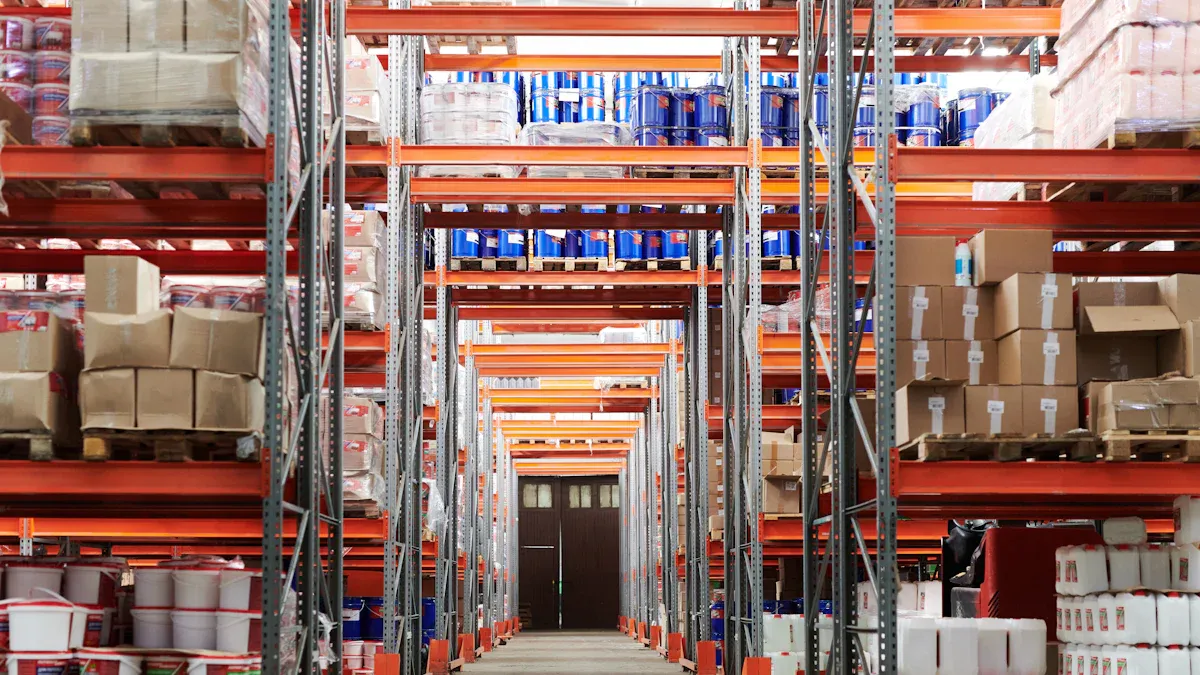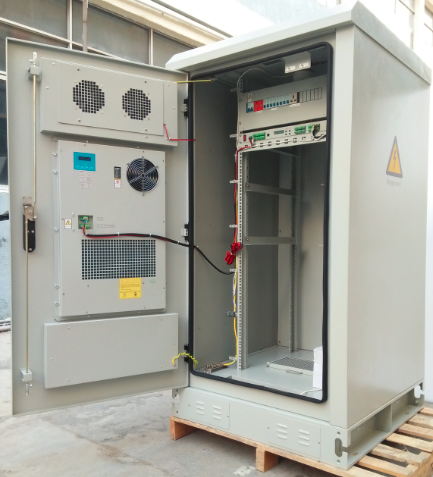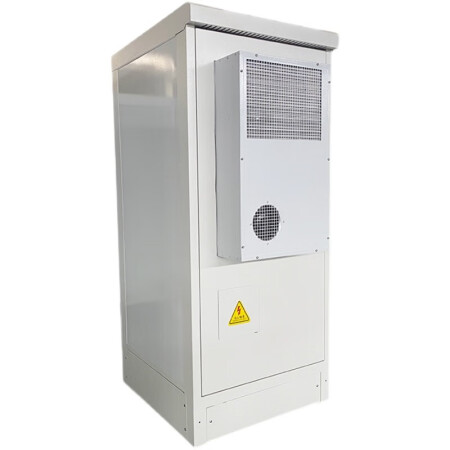Pros and Cons of Industrial Portable ACs in Warehouses

Keeping your warehouse cool can feel like a challenge, especially when central air conditioning isn’t an option. That’s where industrial portable ACs step in as a smart solution. These units are perfect for targeting specific areas, helping you save energy and lower operating costs. In fact, localized cooling systems like these are becoming increasingly popular as logistics and e-commerce grow. Their mobility and efficiency make them ideal for warehouses that need flexible cooling options. However, they aren’t without drawbacks, such as maintenance needs and limited capacity for larger spaces.
Key Takeaways
Industrial portable ACs are easy to move and use. They cool certain parts of your warehouse when needed.
Cooling specific areas keeps sensitive items safe and workers comfy. This helps workers do their jobs better.
These ACs save money by cooling only where needed. They use less energy and lower costs.
You can set them up fast without big changes. This makes them great for warehouses that change often.
Taking care of these ACs is important. It keeps them working well and lasting longer.
Advantages of Industrial Portable ACs

Flexibility and Mobility in Warehouses
Industrial portable ACs are designed with mobility in mind, making them a perfect fit for dynamic warehouse environments. You can easily move these units to different areas based on your cooling needs. Whether you’re dealing with seasonal temperature changes or shifting inventory layouts, their flexibility ensures you’re always prepared.
Here’s what makes them so adaptable:
Feature | Description |
|---|---|
High-Capacity Cooling Performance | Provides 15 tons of air conditioning, ideal for high-volume applications. |
Versatile Installation Options | Can be mounted directly or integrated with duct systems, enhancing flexibility. |
Easy Transport | Built-in forklift pockets facilitate mobility and handling. |
Eco-Friendly and Reliable | Uses sustainable refrigerants and variable-speed blowers for efficiency. |
Versatile Airflow | Offers options for 100% fresh or conditioned air, adapting to specific cooling needs. |
This level of operational flexibility means you can respond quickly to changes in your warehouse setup. For example, if a new shipment arrives and requires immediate cooling, you can simply relocate the unit to the desired spot. No permanent modifications or complex installations are needed.
Tip: When planning the placement of your industrial portable AC, ensure proper venting to maintain optimal performance and avoid overheating.
Targeted Cooling for Temperature-Sensitive Areas
Warehouses often store items that require specific temperature conditions, like electronics, pharmaceuticals, or perishable goods. Industrial portable ACs excel at providing targeted cooling for these temperature-sensitive areas. You can direct the airflow exactly where it’s needed, ensuring your products stay in top condition.
Research shows that portable air conditioners play a crucial role in maintaining optimal temperatures. This reduces the risk of heat-related damage and ensures compliance with storage regulations. Here’s a quick comparison of cooling capacity impacts based on unit type:
AC Type | Cooling Capacity Impact | EER Impact |
|---|---|---|
Single-Duct Unit | Significant reduction | Greater heat input |
Dual-Duct Unit | Lesser reduction | Lesser heat input |
Net heating observed | Negative capacity |
By choosing the right unit for your warehouse, you can maximize efficiency and minimize energy waste. Targeted cooling also improves worker comfort in specific zones, boosting morale and productivity.
Cost-Effectiveness for Zoned Cooling
Cooling an entire warehouse can be expensive, especially if you’re using a central air system. Industrial portable ACs offer a cost-effective solution by allowing you to focus on specific zones instead of cooling the entire space. This zoned approach not only saves energy but also reduces your overall operating costs.
Many businesses have reported significant savings by adopting this strategy. For instance:
Companies using portable AC solutions have seen improved worker morale and productivity due to better temperature control.
A construction project that used portable air conditioning in a tented workspace noted enhanced employee comfort and fewer heat-related illnesses.
By cooling only the areas that need it, you can avoid unnecessary energy consumption. This is especially useful in warehouses with varying storage requirements or fluctuating workloads.
Note: To maximize cost savings, ensure your warehouse ventilation system supports efficient airflow and prevents hot air buildup.
Quick Installation Without Permanent Modifications
One of the biggest advantages of industrial portable ACs is how quickly you can set them up. Unlike traditional cooling systems, these units don’t require permanent modifications to your warehouse. That means no drilling into walls, no major construction, and no long waiting times. You can have them up and running in no time, making them a hassle-free solution for your cooling needs.
Here’s why installation is so straightforward:
Many portable air conditioners are designed for DIY installation. You might need to run some wires or set up ductwork, but it’s nothing too complicated.
Skilled workers can often complete the setup in just an afternoon if conditions are ideal.
Even in more complex cases, the process remains manageable and doesn’t involve permanent changes to your warehouse layout.
This quick installation process is perfect for warehouses that need temporary cooling or have changing layouts. For example, if you’re dealing with a seasonal spike in inventory, you can set up the unit where it’s needed most and move it later without any trouble.
Pro Tip: Always double-check your warehouse ventilation system before installation. Proper airflow ensures the AC works efficiently and prevents overheating.
Energy Efficiency in Small to Medium-Sized Spaces
If your warehouse isn’t massive, industrial portable ACs can be a game-changer for energy efficiency. These units are designed to cool smaller zones effectively, which means you’re not wasting energy on areas that don’t need it. This targeted approach can significantly lower your energy bills while keeping your workspace comfortable.
The energy efficiency ratio (EER) of portable air conditioners is another factor to consider. A higher EER means the unit uses less energy to provide the same cooling power. This makes them an eco-friendly choice for warehouses with moderate cooling needs. Plus, by focusing on specific zones, you can avoid the high costs of running a central air system.
Here’s how you can maximize energy efficiency:
Use the unit in areas with proper warehouse ventilation to prevent hot air buildup.
Choose a model with a high EER for better performance and lower energy consumption.
Regularly maintain the unit to keep it running smoothly and efficiently.
By using portable ACs strategically, you can create a comfortable environment for your workers and protect temperature-sensitive products without breaking the bank. It’s a smart solution for warehouses looking to balance cost and performance.
Disadvantages of Industrial Portable ACs

Limited Effectiveness in Large Warehouse Spaces
Industrial portable ACs work well in small to medium-sized areas, but they struggle to cool large warehouse spaces effectively. If your warehouse spans thousands of square feet, these units may not provide the consistent cooling you need. Their cooling capacity is limited, and they often fail to reach distant corners or high ceilings.
You might notice uneven temperatures in different parts of the warehouse. While one zone feels cool, another might remain warm and uncomfortable. This can create challenges for storing temperature-sensitive goods or maintaining a comfortable environment for workers.
Tip: If your warehouse is large, consider combining industrial portable ACs with a robust warehouse ventilation system. Proper ventilation can help distribute cool air more evenly and improve overall efficiency.
Frequent Maintenance and Shorter Lifespan
Industrial portable ACs require regular upkeep to perform at their best. Dust and debris from the warehouse environment can clog filters and reduce airflow. Over time, this leads to decreased efficiency and higher energy consumption.
Maintenance tasks include cleaning filters, checking refrigerant levels, and inspecting duct connections. Neglecting these tasks can shorten the lifespan of the unit, forcing you to replace it sooner than expected.
Here’s a quick look at common maintenance challenges:
Maintenance Task | Frequency Needed | Impact of Neglect |
|---|---|---|
Filter Cleaning | Weekly | Reduced airflow and cooling performance |
Refrigerant Check | Monthly | Inefficient cooling and higher energy use |
Duct Inspection | Quarterly | Air leaks and uneven cooling distribution |
If you’re not prepared to handle frequent maintenance, these units might not be the best solution for your warehouse.
Noise Levels That May Disrupt Operations
Industrial portable ACs can be noisy, especially when operating at full capacity. The constant hum of the compressor and blower might disrupt warehouse operations or make communication difficult. Workers near the unit may find the noise distracting, which can impact productivity.
The noise level depends on the model and size of the unit. Smaller units tend to be quieter, but they may not provide enough cooling for larger spaces. On the other hand, high-capacity units often produce more noise, which can be a problem in busy warehouses.
Note: To minimize noise, place the unit in a less trafficked area of the warehouse. You can also explore models designed for quieter operation, though they may come at a higher cost.
High Energy Usage in Continuous Operation
Industrial portable ACs can be energy-intensive, especially when you run them continuously. If your warehouse requires cooling around the clock, these units might drive up your electricity bills. While they’re efficient for smaller spaces, their energy consumption increases significantly when used for extended periods.
Here’s why this happens:
Portable ACs often operate at full capacity to maintain consistent cooling. This constant operation uses more power compared to systems designed for larger spaces.
The cooling process involves compressors and blowers that consume a lot of energy, particularly in warehouses with poor insulation or high ceilings.
You might notice a spike in your energy costs during peak summer months. If your warehouse relies on these units for long-term cooling, it’s essential to monitor their energy usage closely.
Tip: To reduce energy consumption, use portable ACs strategically. Focus on cooling specific zones instead of the entire warehouse. Pair them with a robust warehouse ventilation system to improve airflow and reduce the strain on the unit.
Another way to manage energy costs is by choosing models with higher energy efficiency ratings. Units with a high EER (Energy Efficiency Ratio) use less power to deliver the same cooling performance. Regular maintenance also plays a big role. Clean filters and check refrigerant levels to ensure the unit operates efficiently.
Ventilation and Exhaust Challenges in Warehouses
Ventilation is a critical factor when using industrial portable ACs in warehouses. These units need proper venting to expel hot air and maintain cooling efficiency. Without adequate ventilation, the AC’s performance drops, and the warehouse becomes less comfortable.
Here’s what you need to know about ventilation challenges:
Hot Air Exhaust: Portable ACs release hot air as part of their cooling process. If this air isn’t vented properly, it can accumulate and counteract the cooling effect.
Limited Venting Options: Warehouses often lack convenient places to install exhaust ducts. You might need to modify windows, walls, or ceilings to create venting pathways.
Airflow Issues: Poor warehouse ventilation can lead to uneven cooling. Some areas might feel cool, while others remain warm due to restricted airflow.
To tackle these challenges, you’ll need to plan your ventilation system carefully. Consider using flexible ducting to direct hot air outside or into areas where it won’t affect your operations. If your warehouse ventilation system is outdated, upgrading it can make a big difference.
Note: Always check the manufacturer’s guidelines for venting requirements. Improper installation can damage the unit and reduce its lifespan.
A well-ventilated warehouse not only improves the efficiency of your portable AC but also enhances worker comfort and protects temperature-sensitive goods. By addressing ventilation challenges early, you can avoid costly repairs and ensure smooth operations.
Industrial portable ACs are a smart choice for warehouses with specific cooling needs. They’re perfect for smaller zones, temporary setups, or spaces with flexible layouts. You can easily move them around, making them ideal for warehouses that frequently change configurations.
When deciding if these units are right for your warehouse, consider key factors like size, cooling strategy, and budget. Here’s a quick breakdown to help you evaluate:
Aspect | Details |
|---|---|
Sizing | Proper sizing is crucial; larger spaces may require units of 4 or 5 tons based on height and insulation. |
Cooling Strategy | Whole warehouse cooling is energy-intensive; spot cooling is often more cost-effective. |
Budget Considerations | Cooling systems represent a significant investment; strategies for cost-saving are essential. |
Energy Efficiency | New technologies focus on reducing energy consumption and minimizing carbon footprint. |
By focusing on spot cooling and energy-efficient models, you can save money while keeping your warehouse comfortable. Whether you’re cooling temperature-sensitive products or improving worker comfort, these units offer a practical solution.
Tip: Always match the unit’s capacity to your warehouse’s size and cooling needs for the best results.
FAQ
What size industrial portable AC should I choose for my warehouse?
The size depends on your warehouse's square footage and cooling needs. For smaller zones, a 1-3 ton unit works well. Larger areas may require 4-5 ton units. Always check the manufacturer’s recommendations to match the unit’s capacity with your space.
How often should I maintain my industrial portable AC?
You should clean the filters weekly and inspect refrigerant levels monthly. Duct connections need quarterly checks. Regular maintenance ensures optimal performance and extends the unit’s lifespan. Neglecting these tasks can lead to reduced efficiency and higher energy costs.
Can I use industrial portable ACs for long-term cooling?
Yes, but they’re best for temporary or zoned cooling. Continuous operation in large spaces may increase energy costs. To save energy, focus on cooling specific zones and pair the unit with proper ventilation. Choose energy-efficient models for better long-term performance.
Are industrial portable ACs noisy?
Some units can be noisy, especially high-capacity models. Noise levels vary by brand and size. To minimize disruption, place the unit in less busy areas or choose models designed for quieter operation. Check the decibel rating before purchasing.
Do industrial portable ACs require special installation?
No, they don’t need permanent modifications. Most units are easy to set up with basic tools. You’ll need proper venting for hot air exhaust. Follow the manufacturer’s guidelines for installation to ensure efficient operation and avoid overheating.
Tip: Always plan your venting system before installation to prevent airflow issues.
See Also
The Importance of Air Conditioning in Outdoor Cabinets
Benefits of ESTEL Cooling Solutions for Industrial Use
Protecting Sensitive Equipment with Communication Air Conditioning
Outdoor Communication Applications and Telecom Cabinet Air Conditioning
CALL US DIRECTLY
86-13752765943
3A-8, SHUIWAN 1979 SQUARE (PHASE II), NO.111, TAIZI ROAD,SHUIWAN COMMUNITY, ZHAOSHANG STREET, NANSHAN DISTRICT, SHENZHEN, GUANGDONG, CHINA

